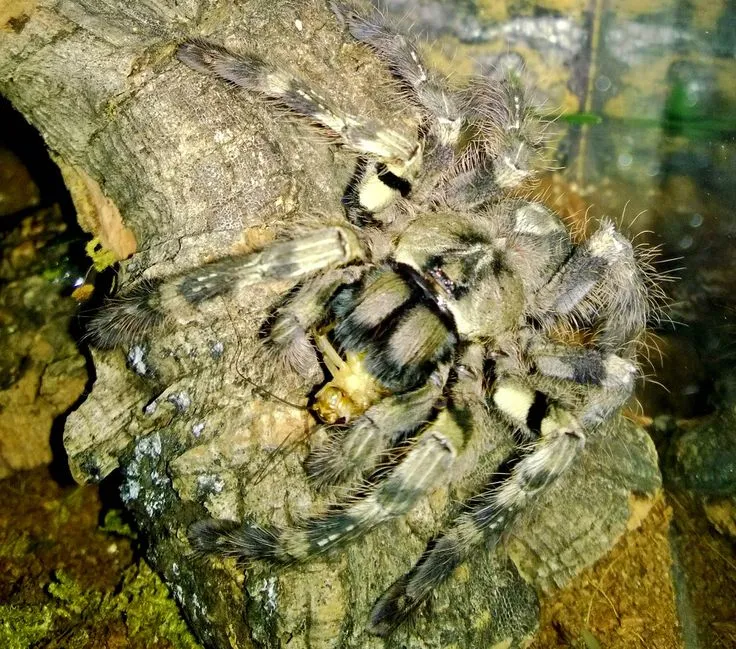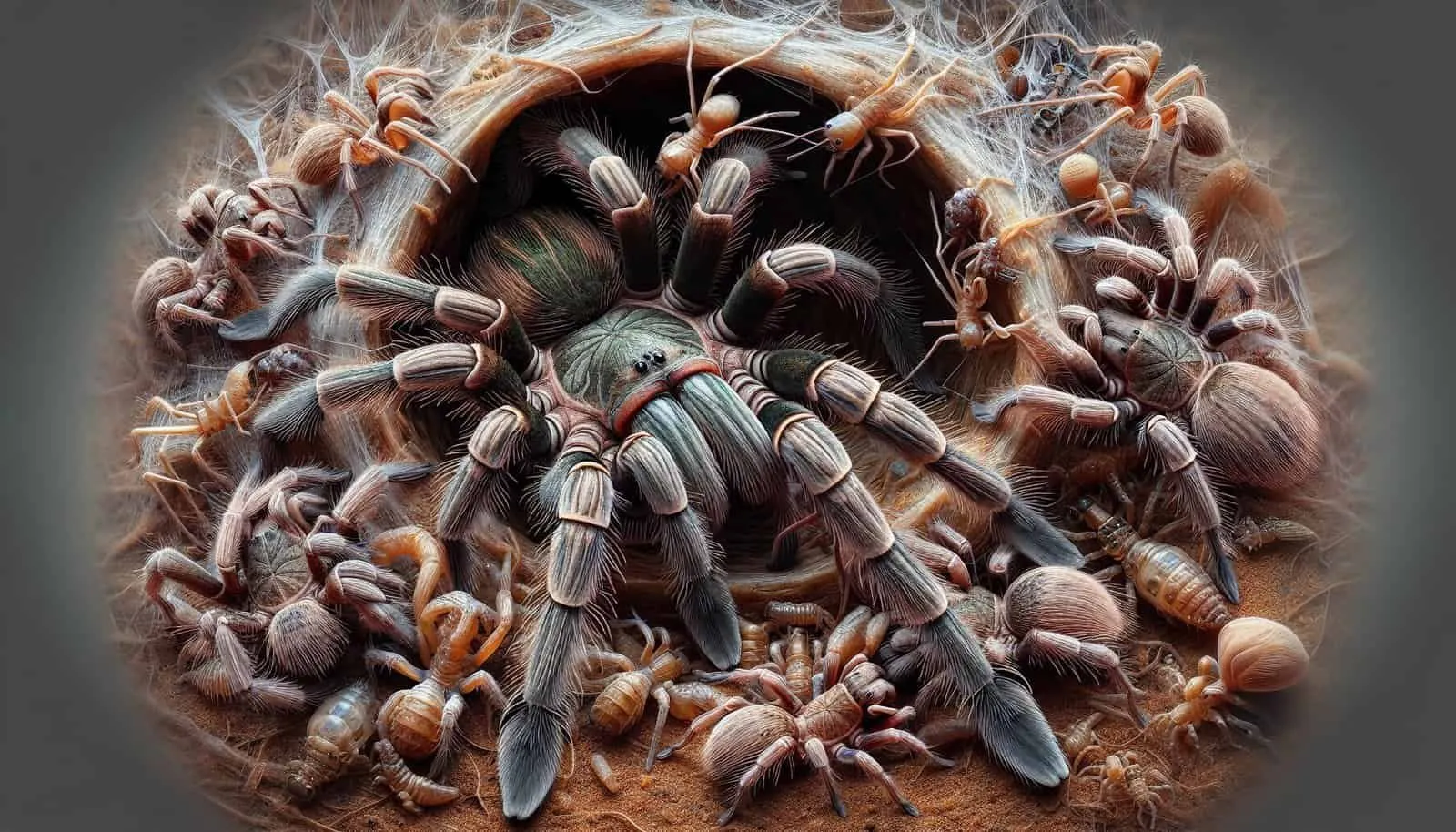Tarantula Feeding Schedule: The Basics
Keeping a tarantula as a pet can be a fascinating experience, but understanding their feeding habits is crucial for their health and well-being. Unlike more common pets like cats and dogs, tarantulas have unique dietary needs and a feeding schedule that reflects their slow metabolism and growth patterns. This guide provides a comprehensive look at how often you should feed your tarantula, covering everything from the basics of their metabolism to troubleshooting common feeding issues. Getting the feeding schedule right will ensure your eight-legged friend thrives.
Understanding Tarantula Metabolism
Tarantulas are cold-blooded creatures, meaning their metabolism is heavily influenced by their environment. This is a key factor in determining how often they need to eat. In warmer temperatures, their metabolism speeds up, and they may require more frequent feedings. Conversely, in cooler temperatures, their metabolism slows down, and they may need less food. Understanding this basic principle will help you adjust your tarantula’s feeding schedule to suit its needs. The metabolic rate also varies depending on the age, with younger tarantulas having a faster metabolism than adults.
Factors Influencing Feeding Frequency

Several factors influence how often you should feed your tarantula. These factors include the tarantula’s age, species, size, growth stage, and the environmental conditions of its enclosure.
Age of the Tarantula
Younger tarantulas, also known as spiderlings, are in a rapid growth phase and typically need to be fed more frequently than adults. As they mature, their growth rate slows down, and their feeding needs decrease. Adjusting the feeding frequency based on the age is essential for healthy development and avoiding both underfeeding and overfeeding.
Species of the Tarantula
Different tarantula species have different metabolic rates and dietary preferences. Some species are naturally more voracious eaters than others. Researching the specific needs of your tarantula species is crucial for establishing an appropriate feeding schedule. Some species, for example, might prefer feeding once a week, while others may be fine with once every two weeks or even monthly.
Size and Growth Stage

A tarantula’s size directly correlates with its feeding needs. Larger tarantulas require more food to sustain their bodies. The growth stage also plays a significant role, as tarantulas will eat more when they are preparing to molt. Monitor the size of your tarantula and adjust the amount of food accordingly.
Temperature and Environmental Conditions
Temperature significantly impacts a tarantula’s metabolism. Warmer temperatures speed up metabolism, leading to a higher demand for food. Conversely, cooler temperatures slow down the metabolic rate, decreasing the need for frequent feedings. Ensure the enclosure’s temperature is within the species’ recommended range and adjust the feeding schedule accordingly.
How to Determine if Your Tarantula is Hungry
Observing your tarantula’s behavior is key to determining its feeding needs. Knowing the signs of a healthy appetite and recognizing the signs of overfeeding will help you fine-tune the feeding schedule. Always ensure you are not overfeeding your tarantula.
Signs of a Healthy Appetite

A hungry tarantula will often display active hunting behavior. It might actively search for food, be alert and responsive to movement, and quickly pounce on prey. If your tarantula readily accepts food and consumes it quickly, it’s likely getting the right amount of food. A healthy appetite is a good indicator that your tarantula is thriving.
Signs of Overfeeding
Overfeeding can lead to health problems. If your tarantula refuses food, appears bloated, or has a large abdomen, it may be overfed. Other signs include a lack of interest in food and a lethargic demeanor. Overfeeding can put stress on the tarantula’s internal organs, so it is important to be cautious and make sure you are not overfeeding it.
Typical Feeding Schedules for Tarantulas
Feeding schedules vary based on the tarantula’s life stage. Here’s a general guideline:
Spiderlings

Spiderlings, or young tarantulas, require more frequent feeding due to their rapid growth. Feed them every 2-3 days, offering small prey items like fruit flies or pinhead crickets. Adjust the feeding frequency based on their appetite and growth rate.
Juveniles
Juvenile tarantulas can be fed once or twice a week. Offer them appropriately sized crickets or other prey items. Monitor their growth and adjust the feeding schedule as needed. Ensure you provide enough food to help them develop and grow properly. The goal is healthy development, avoiding both overfeeding and underfeeding.
Adults
Adult tarantulas can be fed once every 1-2 weeks. Some adult tarantulas may even need less frequent feeding, perhaps once a month, especially if they are well-fed. Offer them larger prey items like adult crickets, roaches, or mealworms. Adjust the feeding schedule based on the tarantula’s species and individual needs.
Feeding Techniques and Best Practices

Proper feeding techniques are essential for your tarantula’s health. Here’s what you need to know:
Choosing the Right Food
Provide a varied diet of appropriate-sized insects. Crickets, roaches, mealworms, and even small invertebrates can be suitable. Avoid feeding wild-caught insects, as they may carry parasites or pesticides. Ensure the prey is healthy and free from disease.
Prey Size and Quantity
The prey should be no larger than the tarantula’s abdomen. Remove any uneaten prey within 24 hours to prevent stressing the tarantula. Overfeeding can lead to health problems. Only feed what the tarantula is likely to eat.
Water and Hydration

Always provide a shallow water dish with fresh water. This is essential for hydration, especially for tarantulas that don’t get enough water from their prey. Make sure the water dish is shallow to prevent the tarantula from drowning. The water should be clean and fresh.
Troubleshooting Common Feeding Issues
Sometimes, tarantulas may refuse to eat. Here’s how to handle common feeding problems:
Refusal to Eat
If your tarantula refuses to eat, check its enclosure for proper temperature and humidity. Make sure it’s not preparing to molt. A tarantula may also refuse food if it is stressed or if the prey is too large. Offer smaller prey or try a different type of insect. Check for any other health issues.
Excessive Webbing

Excessive webbing can sometimes indicate a tarantula is stressed or preparing to molt. Reduce disturbances and ensure the enclosure conditions are optimal. If excessive webbing persists, consult with a veterinarian specializing in exotic animals.
Molting and Feeding
Tarantulas stop eating before molting, as they become vulnerable during this process. Do not offer food during molting. After molting, wait a few days for the tarantula’s new exoskeleton to harden before feeding it. Molting is a critical part of their growth cycle, so a healthy environment is essential.
In conclusion, understanding your tarantula’s feeding needs is vital for its health and well-being. By paying attention to the tarantula’s age, species, size, and environmental conditions, you can establish a suitable feeding schedule. Always observe your tarantula for signs of hunger or overfeeding, and adjust the feeding frequency as needed. Remember to provide fresh water and a varied diet. By following these guidelines, you can ensure your tarantula thrives and enjoys a long, healthy life. Proper care leads to a happy and thriving pet.
